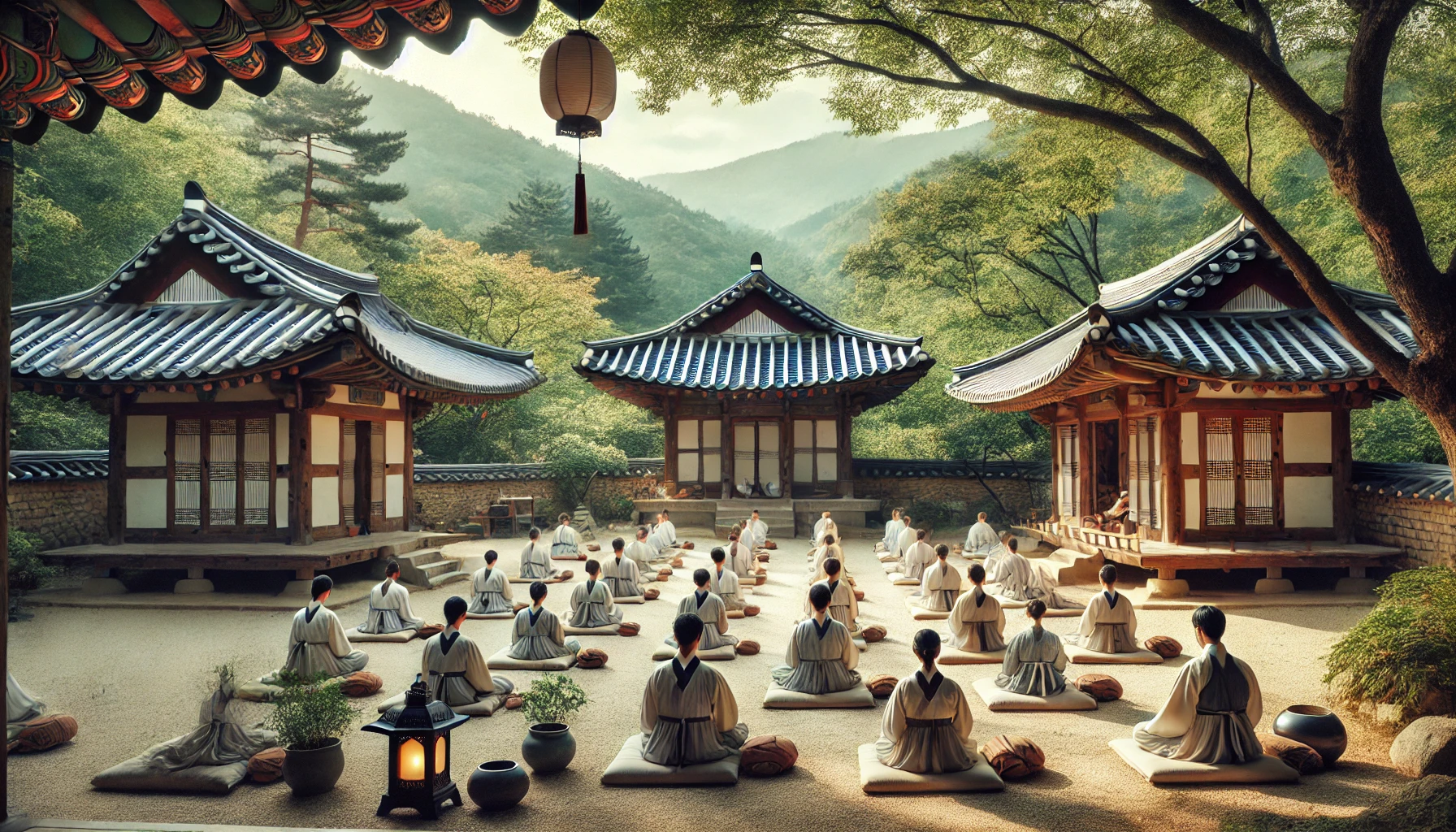Table of Contents
Introduction to Mindful Living
Mindful living is an intentional approach to daily life, emphasizing awareness and presence in each moment. This concept has its roots in ancient traditions, particularly within Eastern philosophies such as Buddhism. Mindfulness, which serves as a cornerstone of this practice, encourages individuals to cultivate greater awareness over their thoughts, emotions, and physical sensations, allowing them to engage with the world without judgment.
The growing interest in mindful living can be attributed to the escalating pace of modern life. With technology continually advancing and commitments multiplying, many find themselves overwhelmed and disconnected. Mindful living promotes mental well-being by encouraging individuals to slow down, focus on their experiences, and cultivate an attitude of gratitude and acceptance. By fostering presence, individuals are better equipped to manage stress and enhance emotional resilience, enabling a deeper connection to themselves and their surroundings.
Central to the principles of mindful living are key practices such as meditation, conscious breathing, and reflection. These techniques not only ground participants in the present but also bolster emotional intelligence and enhance overall mental health. Engaging in mindful practices, individuals are likely to experience reduced anxiety and improved focus, which are vital in navigating daily challenges.
The practice of mindful living can be enriched through cultural experiences that promote deeper introspection. In Korea, temple stays offer a unique opportunity for Americans seeking to immerse themselves in a serene environment where mindfulness is woven into every aspect of daily life. The experience of staying in a temple allows visitors to practice mindfulness in its most authentic form, exploring the fundamental principles of this enriching lifestyle.

The Essence of Korean Temple Stays
A temple stay in Korea offers a unique opportunity for individuals to immerse themselves in the rich traditions of Buddhism. Historically, Buddhism has played a vital role in shaping Korean culture and philosophy since its introduction in the 4th century. This spiritual practice is not only a religion but also a deeply rooted way of life that emphasizes harmony, mindfulness, and community. As such, a temple stay provides a window into this profound cultural heritage, allowing participants to connect with centuries of wisdom and practice.
During a temple stay, visitors can expect a structured schedule that promotes tranquility and introspection. Each day typically begins with an early morning chanting session, where participants gather to engage in collective prayers and meditation. This early ritual serves as a gentle reminder of the importance of mindfulness and inner reflection. Following this, attendees partake in ‘seon’ meditation, which is essential for cultivating mental clarity and emotional balance. Guided by seasoned monks, these meditative practices foster a deeper understanding of oneself and the surrounding world.
Another key aspect of a temple stay is the consumption of traditional meals, known as ‘temple food’. This cuisine is primarily vegetarian, emphasizing seasonal ingredients, mindful preparation, and the meditative approach to eating. These meals not only provide nourishment but also encourage gratitude and appreciation for the food that sustains us. Additionally, participants may engage in various rituals alongside monks, such as tea ceremonies and discussions on Buddhist teachings, which aim to enhance the overall experience of self-reflection and personal growth.
Overall, a temple stay in Korea serves as a unique blend of spiritual practice and cultural exploration. It offers Americans an unparalleled chance to step away from the busyness of modern life and embrace a more mindful way of living, encouraging both personal reflection and a deeper appreciation for Korean heritage.
Benefits of Temple Stays for Americans
Temple stays offer a distinctive opportunity for Americans to immerse themselves in Korean culture while experiencing profound psychological, emotional, and spiritual benefits. One of the primary advantages of participating in such an experience is the significant enhancement of mindfulness. In today’s fast-paced world, individuals often find themselves overwhelmed and distracted. Engaging in the serene environment of a temple facilitates a return to the present moment through practices such as meditation and mindful breathing, which can help reduce anxiety and foster a calm mind.
Furthermore, the structured routine of temple life, including early morning wake-ups, communal meals, and meditation sessions, encourages participants to disconnect from the chaos of daily life. This disconnection not only promotes stress reduction but also allows individuals to reflect and recalibrate their mental states. Many Americans report feeling an overwhelming sense of peace after their temple stay, which echoes the calming philosophies deeply rooted in Eastern traditions.
Emotionally, temple stays also aid in personal growth and introspection. By providing a quiet space away from the distractions of modern civilization, individuals can explore their thoughts and feelings more freely. This contemplation often leads to better emotional regulation and a deeper understanding of one’s self, which can result in improved relationships and interactions with others.
In addition to psychological and emotional benefits, the spiritual aspect of temple stays cannot be overlooked. Participating in daily rituals and engaging in the rich traditions of Buddhism can foster a sense of connection to something greater than oneself. Americans who partake in temple stays often leave with not only a broader appreciation for Eastern philosophies but also a renewed sense of purpose and direction in their own lives.
Choosing the Right Temple for Your Stay
When considering a temple stay in Korea, it is essential to select a temple that aligns with your personal interests and desired experience. Various factors should be taken into account, such as location, the type of activities offered, and the overall ambiance of the temple. Researching temples in advance will enhance your experience and ensure that your stay is fulfilling and enriching.
Location is a crucial factor when choosing a temple. Depending on your itinerary, you may prefer a temple situated in a bustling city or one nestled within nature’s tranquility. Urban temples may provide more accessibility to modern conveniences, while countryside locations can offer a unique chance to immerse yourself in the serenity of nature. Both settings present distinct opportunities for meditation and reflection, so consider what environment will best facilitate your mindful living experience.
Additionally, it is advisable to assess the type of experiences that each temple offers. Many temples provide a range of activities, such as meditation sessions, tea ceremonies, and Buddhist teachings. Familiarizing yourself with these options can help you find a temple that offers programs resonating with your interests. Some temples may cater more towards beginners in mindfulness practices, while others may offer more in-depth retreats for seasoned practitioners.
Reading reviews from previous visitors is another valuable step in your selection process. Online platforms often host feedback about the quality of experiences at various temples. Look for common themes, such as the staff’s hospitality, cleanliness, and the authenticity of the experience. This insight can guide you in making an informed choice on which temple aligns with your expectations. Ultimately, taking the time to research and reflect on your options will lead to a more enriching temple stay experience, encouraging personal growth and mindfulness.
Preparing for Your Temple Stay
Embarking on a temple stay in Korea offers a unique opportunity to engage in mindful living, embracing the tranquility and spiritual depth of Buddhist culture. To fully benefit from this experience, adequate preparation is essential.
First and foremost, consider the essentials you will need to pack. Comfortable clothing is paramount; opt for loose-fitting attire that allows ease of movement for activities such as meditation and walking. As a rule, it is advisable to wear modest clothing that covers the shoulders and knees to respect the cultural norms of the temple. Additionally, bring a light jacket or shawl, as temperatures can vary. Do not forget personal items such as toiletries, a reusable water bottle, and any medications you may require during your stay. A journal can also be beneficial for reflecting on your experiences and thoughts throughout the retreat.
Cultural etiquette plays a significant role in shaping a respectful temple stay. Familiarize yourself with the basic customs, such as bowing when entering certain areas, speaking softly, and observing silence when required. It is crucial to be mindful of your actions and words, as they reflect not only on you but also on the communal atmosphere of the temple. Engaging with the local monks and participating in rituals with an open heart will enhance your spiritual journey.
Mental preparation is equally important. Consider allocating time to disconnect from your daily life and technology to immerse yourself fully in this meditative environment. Set personal intentions for your temple stay, focusing on practices that encourage mindfulness and self-reflection. Whether it involves deepening your understanding of Buddhism or simply reconnecting with nature, come with a willingness to explore new perspectives and embrace the present moment.
Daily Life During a Temple Stay
Experiencing a temple stay in South Korea allows individuals to immerse themselves in a daily routine steeped in mindfulness and tradition. Each day is meticulously structured to encourage participants to connect with their inner selves and the surrounding environment. A typical day begins early in the morning, often around 4:00 AM, with the sounding of temple bells that signal the start of morning chants and meditation sessions. These early hours are devoted to personal reflection and collective mindfulness practice, helping guests set a peaceful tone for the day ahead.
Following the morning meditation, communal meals form an essential part of the daily schedule. Participants come together to enjoy simple yet nutritious vegetarian dishes, prepared with local ingredients. The act of sharing meals fosters a sense of community, inviting guests to practice gratitude and appreciation for the food and surroundings. Silence is often maintained during these meals to enhance the experience of mindful eating, allowing guests to savor each bite and engage fully with their senses.
In addition to meditation and meals, guests are given work assignments that contribute to the maintenance of the temple grounds. This could involve tasks such as gardening, cleaning, or assisting in the kitchen. These responsibilities are not merely chores but opportunities to practice mindfulness through purposeful activity. Engaging in such tasks encourages participants to cultivate presence in the moment, whether they are tending to plants or preparing food.
As the day progresses, guests may participate in more meditation sessions, dharma talks, or workshops, which explore Buddhist philosophy and practices. By the time evening falls, a sense of community has been built, and guests are likely to find themselves reflecting on the lessons learned throughout the day. Daily life during a temple stay is a transformative journey into the heart of mindful living, emphasizing the interconnectedness of the self, others, and nature.
Testimonials from American Travelers
Many Americans have embarked on transformative journeys through temple stays in Korea, sharing profound personal stories that highlight the emotional and spiritual growth they experienced during their time at these serene locations. One traveler, Sarah, recounts her stay at a traditional temple nestled in the mountains. She notes how the experience offered her much-needed solace and clarity amidst the chaos of daily life. “The simplicity and beauty of the temple grounds helped me reconnect with myself,” she reflected. Sarah’s story illustrates how the tranquil environment of a temple stay can foster significant internal reflection.
Another traveler, John, highlights the sense of community he felt during his stay. He participated in communal activities, such as meditation and cooking, allowing him to bond with both monks and other guests. “I felt a deep sense of connection, not just to the people around me but also to something much greater,” John expressed. This aspect of connecting with others through shared experiences is often emphasized in testimonials, showcasing how temple stays can provide a unique opportunity for travelers to engage in meaningful interactions.
Moreover, Emily shares her emotional journey during a five-day stay at a temple near Gyeongju. She emphasizes how the structured daily activities, including early morning chanting and nature walks, led to her awakening a sense of peace she had long been missing. “Each day felt like peeling away layers of stress and anxiety,” Emily stated. Her narrative resonates with many who seek clarity and balance, demonstrating how temple stays can serve as a catalyst for personal development.
These testimonials from American travelers collectively underscore the transformative power of temple stays in Korea, illustrating how such experiences promote emotional healing and spiritual growth. The harmony between nature, mindful living, and community engagement makes temple stays not just a travel option but a pathway toward enriching one’s inner life.
Sustaining Mindfulness After Your Stay
Returning from a temple stay can often feel like a transition from a serene reset back to a bustling routine. However, the principles of mindful living that you experienced during your stay can be seamlessly integrated into daily life. One effective strategy is to establish a dedicated time for meditation, drawing on the practices you learned in the temple. Whether it’s morning meditation to start your day with clarity or evening mindfulness exercises to reflect on your experiences, consistency is key. Consider setting aside a specific time each day to engage in meditation, even if it’s just for ten minutes.
Additionally, creating a mindful environment at home plays a crucial role in sustaining your newfound practices. This can be accomplished by designating a quiet space for meditation and mindfulness activities. Enhance this space with items that resonate with your experience, such as candles, incense, or a small altar that recalls your time spent in the temple. These visual reminders can anchor your mindfulness practice and evoke memories of tranquility, reinforcing your commitment to this lifestyle.
Another vital aspect of sustaining mindfulness is to practice gratitude regularly. By keeping a gratitude journal, you can jot down experiences, thoughts, or feelings that you are thankful for each day. This practice not only cultivates a positive mindset but also deepens your awareness of the present moment, allowing you to maintain a connection to your temple stay. Furthermore, sharing your experiences with others can enhance your mindfulness journey; consider engaging with a community focused on mindful living or joining a meditation group.
Incorporating mindful eating habits is yet another effective method. This can include savoring each bite, being conscious of the flavors and textures, and minimizing distractions during meals. By infusing mindfulness into your everyday activities, you extend the serenity of your temple stay into your life, enriching your overall well-being and fostering a sustained practice of mindfulness.
Conclusion and Call to Action
In recent years, the concept of mindful living has gained significant traction, with many individuals seeking ways to enhance their overall well-being. One particularly enriching experience that fosters this lifestyle is the practice of temple stays in Korea. Throughout this blog post, we explored the unique benefits of such an immersive experience, highlighting how temple stays offer a serene environment conducive to mindfulness, reflection, and personal growth.
Participants in a temple stay engage in various activities, including meditation, prayer, and even communal tasks that instill a sense of purpose and connection. The tranquil setting, paired with traditional Buddhist teachings, allows visitors the opportunity to disconnect from the fast-paced lifestyle often found in modern society. Furthermore, temple stays facilitate a deeper understanding of not only Korean culture but also the principles of mindfulness that many are eager to adopt.
For those who are interested in exploring this enriching experience, numerous resources are available. Websites such as the Korea Temple Stay website provide comprehensive information about various temples, the programs they offer, and how to make reservations. Engaging in a temple stay may serve as a transformative journey, allowing participants to cultivate a more mindful approach to life. We encourage you to consider temple stays as a meaningful way to enhance your pursuit of mindfulness.
By embracing these valuable experiences, you can deepen your journey toward mindful living. Take the opportunity to immerse yourself in this unique cultural aspect of Korea, and witness firsthand the positive impact it may have on your lifestyle. We hope this blog post inspires you to embark on your own temple stay adventure.






